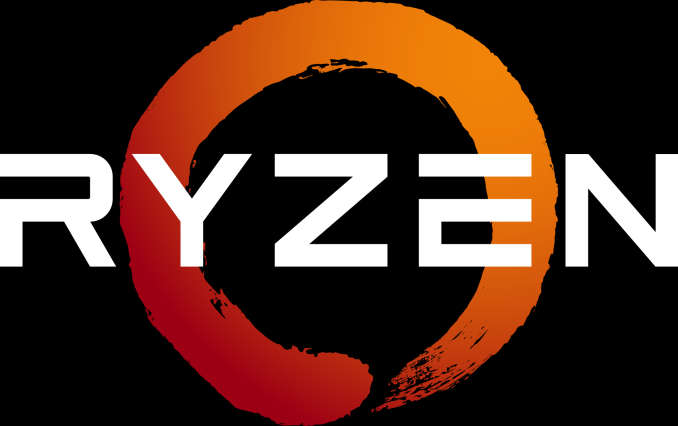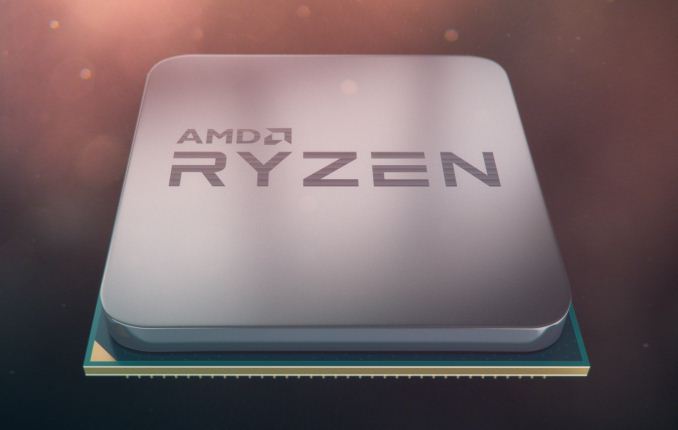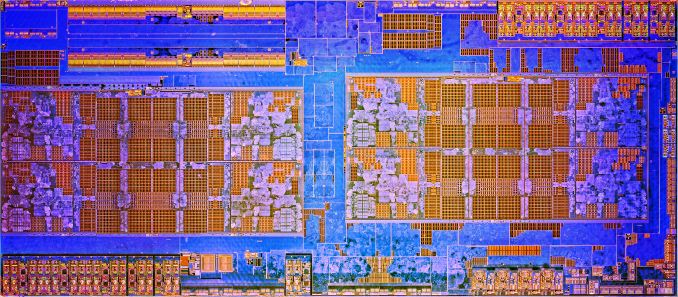AMD Launches Ryzen: 52% More IPC, Eight Cores for Under $330, Pre-order Today, On Sale March 2nd
by Ian Cutress on February 22, 2017 9:00 AM EST
The biggest x86 launch for AMD in five years is today: Ryzen is here. As always before a major launch, AMD gives a ‘Tech Day’ for relevant press and analysts, and through this event AMD’s CEO, Dr. Lisa Su lifted the lid on one of the most anticipated products in the semiconductor industry. AMD knows how to control the level of enthusiasm for its fans, and today is the end result, with processors going on pre-order from major retailers today at 1pm EST, ready for a general hard launch on March 2nd.
In a similar vein to launches of recent smartphones, AMD is doing a staggered announcement/launch with the products on their new microarchitecture. Where Samsung/Apple might give all the details for a product a few weeks before it’s available to buy, today on February 22nd marks the day where AMD is giving consumers information about Ryzen, and specifically the Ryzen 7 family of eight-core products. All the information today is from AMD, and AMD’s internal testing, and pre-orders also start from today for users ready to put down their money for a launch day part. Reviews of the CPUs, as well as when the CPUs will ship to customers, is on March 2nd. This also happens to be right in the middle of two annual shows, Game Developer Conference (GDC) and Mobile World Congress (MWC), making the time between receiving pre-launch samples and being able to provide independent verification of AMD’s performance claims relatively frantic. We’ll do our best!
The Ryzen Family
With a new processor launch, naming the parts and positioning them within the market is critical. So with Ryzen, the processor stack will be split into three based on performance and price: Ryzen 7 at the high end, Ryzen 5 in the middle, and Ryzen 3 for more price-conscious consumers. Both Ryzen 5 and Ryzen 3 are set to be launched later, and Ryzen 7 is the first portion of the family to be released.
Ryzen 7 will have three CPUs to start, all having eight cores and supporting simultaneous multi-threading:
- Ryzen 7 1800X: 8C/16T, 3.6 GHz base, 4.0 GHz turbo, 95W, $499
- Ryzen 7 1700X: 8C/16T, 3.4 GHz base, 3.8 GHz turbo, 95W, $399
- Ryzen 7 1700: 8C/16T, 3.0 GHz base, 3.7 GHz turbo, $329
Ryzen 7 1800X will be the high-end part, featuring a base clock of 3.6 GHz and a turbo of 4.0 GHz, within a TDP of 95W, and for $499. Next to this is Ryzen 7 1700X, launching at $399, with a base/turbo of 3.4/3.8 GHz. The final part for the launch is the Ryzen 7 1700, providing eight cores and sixteen threads for $329 at 3.0/3.7 GHz frequencies.
Processors will initially be available for pre-order from 185 retailers and OEMs worldwide, either as individual parts or pre-built systems.
What, not 40% IPC? 52% IPC??
Enthusiasts and analysts use the term IPC, or ‘Instructions Per Clock’, as a measure of how much the underlying microarchitecture improves from generation to generation. Two decades ago, a good design on a smaller node could net a healthy double-digit gain, whereas in recent years 5-10% gain has become the norm. When AMD initially announced that the new Zen microarchitecture they were developing was aiming for a 40% IPC gain, despite the low IPC they were starting from, users remained skeptical. AMD rehired Jim Keller to work alongside long-term AMD architect Mike Clark and produce a team with several goals in mind: high-performance x86, simultaneous multithreading, and a product to be relevant in the computing, PC, server and mobile space again. So despite this, 40% IPC always seemed a somewhat lofty goal, because Bulldozer was so underwhelming, and despite this low starting point. For the Ryzen launch today, AMD is stating that the final result of that goal is a 52% gain in IPC.
This is something we will need to test in due course!
The Ryzen Silicon, and the Future
AMD pointed out that the new 8-core silicon design runs 4.8 billion transistors and features 200m of wiring. Through previous announcements we’ve examined parts of the microarchitecture including cache sizes, threading, front-end/back-end design, and so on.
AMD Zen Microarchiture Part 2: Extracting Instruction-Level Parallelism
AMD Gives More Zen Details: Ryzen, 3.4 GHz+, NVMe, Neural Net Prediction, & 25 MHz Boost Steps
AMD’s CEO was keen to point out that this is a from-scratch design for AMD, using the knowledge gained from features developed for previous products but ultimately under the hood it looks like ‘a typical x86 high-performance core’, with AMD-specific features and tweaks. We were told that AMD’s roadmap extends into the multi-year range, so while the focus for 2017 will be on this family of products, back at HQ the next two generations are in various stages of development.
BENCHMARKS PLEASE
So despite the 82+ motherboards going to be available, 19 initial PC system builders moving into 200+ through the first half of 2017, the big question on everyone’s lips is how exactly does it perform?
Well, AMD gave us the following numbers:
AMD's benchmarks showed that the top Ryzen 7 1800X, compared to the 8-core Intel Core i7-6900K, both at out-of-the-box frequencies, gives an identical score on the single threaded test and a +9% in the multi-threaded test. AMD put this down to the way their multi-threading works over the Intel design. Also, the fact that the 1800X is half of the price of the i7-6900K.
In a similar vein, again with the Cinebench 15 multi-threaded test, the Ryzen 7 1700X scores over and above the Core i7-6800K (its price competition) and higher than the Core i7-6900K which costs 2.5 times as much.
We’ll tell you what our benchmarks say, with official retail processors. But you will have to wait until March 2nd. Sorry.





















386 Comments
View All Comments
mapesdhs - Tuesday, February 28, 2017 - link
Still far too expensive.hahmed330 - Friday, February 24, 2017 - link
BENCHMARKS PLEASEAries1470 - Friday, February 24, 2017 - link
Has anyone else noticed this article here http://www.anandtech.com/show/11031/amd-set-to-lau...Still made for Q1 :-D
mercantilist - Friday, February 24, 2017 - link
A substantial part of Intel's performance advantage stems from its lead in manufacturing minorization .It still holds a minor manufacturing advantage and will grow that advantage within months.Haawser - Friday, February 24, 2017 - link
No, they won't. https://www.engadget.com/2017/02/11/intel-8th-gen-...10nm desktop chips will not be this year. Maybe a few very expensive server ones, or 'premium' ULP SoCs, but not desktop. They are now 1H2018 at the earliest. Please do some research instead of just repeating the rumors you may have heard elsewhere.
cheshirster - Saturday, February 25, 2017 - link
I just calculated Ryzen die size at about 200mm2 (4.8B transistors)Broadwell-E is a 256mm2 die with 10 cores and 3.4B transistors. ~200mm2 and 3B working in 6900K.
We need a clarification for WTF is going on.
How can it be that AMD has much higher density?
yhselp - Saturday, February 25, 2017 - link
Finally, competition. The more important battle would be against NVIDIA on the GPU front; the kind of money NVIDIA has been charging for GeForce is absurd and has to stop, branding video cards based on mid-sized GPUs as flagships has to stop, a GTX 1080 (mid-sized GPU) costs up to $700, whereas a GTX 560 Ti (same class mid-sized GPU) cost $250 just a few short years ago - this has to stop.yhselp - Saturday, February 25, 2017 - link
Only good things can come from now on. That being said, the immediate benefit for consumers wouldn't be what AMD is trying to make it seem like - you wouldn't be able to buy an i5-7400, i5-7600, or i7-7700 equivalent for half the price, even if Ryzen is as good as Kaby Lake. Ryzen 3 1200X is $30 less expensive than than i5-7500; Ryzen 5 1400X might end up being slightly slower than i7-7700, but it's also $100 less expensive which might make it a very popular choice, especially if it overclocks well.yhselp - Saturday, February 25, 2017 - link
It's a bit disappointing that it doesn't seem like AMD would offer a quad-core Ryzen for $100, at least not initially. A CPU to challenge Intel's G4560 (2c/4t, no AVX for $64) would also be nice.Haawser - Saturday, February 25, 2017 - link
You would do better saving $129 for an R3 1100. 4C/4T is always better than 2C/4T. And unlike the HT Pentiums it will have AVX.